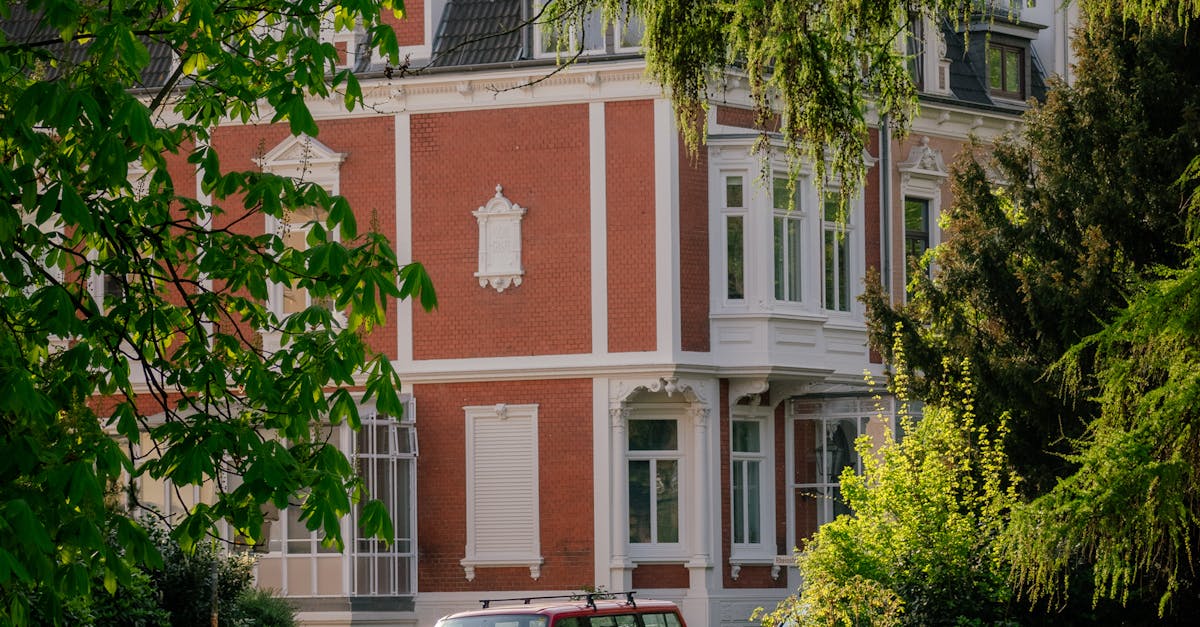 Selecting Triple Glazed, LowE Coated Windows
Selecting Triple Glazed, LowE Coated WindowsDurability of Passive House Components in High Humidity EnvironmentsWhat is thermal bridging and why is it important to eliminate it in Passive House construction?
How can choosing the right windows and doors impact thermal performance in a Passive House?Table Of Contents
Impact of Weatherproofing on Passive House DurabilityFAQS
Proper ventilation systems in a Passive House play a vital role in maintaining indoor air quality and thermal comfort. Balancing heat rCooling Systems Compatible with High Humidity Environmentsecovery and fresh air intake ensures a constant supply of clean air while minimising energy losses, creating a healthier and more comfortable living environment.
To ensure optimum performance and longevity of passive house components in high humidity environments, it is crucial to select cooling systems that are specifically designed to withstand such conditions. In regions with elevated moisture levels, traditional cooling systems may struggle to maintain effectiveness, leading to potential issues such as mould growth and degradation of building materials. Therefore, it is essential to opt for cooling solutions that are compatible with high humidity enWhy is it essential to balance heat recovery and fresh air intake in a Passive House ventilation system?vironments to uphold the overall durability of the passive house structure.
One effective cooling system for high humidity passive houses is the use of dedicated dehumidification units in conjunction with efficient ventilation systems. By incorporating these systems, excess moisture in the indoor air can be effectively controlled, reducing the risk of moisture-related problems within the building. Additionally, selecting cooling systems with built-in humidity control features can significantly enhance the overall comfort and sustainability of the passive house while mitigating potential issues associated with high humidity levels.Balancing heat recovery and fresh air intake in a Passive House ventilation system is crucial to optimise energy efficiency and indoor air quality. This balance helps ensure that the building remains well-ventilated while minimising heat loss, ultimately enhancing the overall comfort and sustainability of the living space.
Water Management Strategies in High Humidity Environments
In high humidity environments, effective water management strategies are crucial to maintaining the durability and performance of passive house components. One key aspect is the implementation of efficient drainage systems to control moisture levels and prevent water infiltration. By ensuring proper slope gradients, installing appropriate gutters, and incorporating well-designed downspouts, passive houses can effectively manage excess water and minimize the risk of moisture-related damage.Related Links
Additionally, utilising moisture-resistant materials and coatings can further enhance the water management capabilities of passive house structures in high humidity conditions. Specially designed moisture barriers, sealants, and membranes can help protect vulnerable areas from water intrusion and promote long-term durability. By combining robust drainage systems with moisture-resistant construction materials, passive houses can effectively combat the challenges posed by high humidity environments and maintain optimal performance levels over time.Thermal Bridge-Free Construction Materials for Passive House
Implementing Effective Drainage Systems for Moisture ControlImportance of Thermal Bridge-Free Design in Passive House
Effective drainage systems play a crucial role in managing moisture in high humidity environments, especially for passive houses aiming for optimal durability. Ensuring proper drainage away from the foundation and surrounding areas is essential to prevent water buildup and potential damage to the structure. By implementing efficient gutter systems, downspouts, and slopes directing water away from the building, passive house owners can mitigate the risks associated with excess moisture.Cost-Effective Thermal Bridge-Free Strategies for Passive House
Moreover, incorporating features such as French drains or gravel-filled trenches around the foundation can further enhance the drainage capabilities of the passive house. These added measures help to divert water efficiently, reducing the likelihood of water seepage into the building and maintaining a dry, moisture-controlled environment. By prioritizing the installation of robust drainage systems as part of the overall design and construction process, passive house owners can safeguard their investment and promote the longevity of their property in high humidity conditions.Passive House Standards for Thermal Bridge-Free Construction
FAQSInnovations in Thermal Bridge-Free Construction for Passive House
Can passive house components withstand high humidity environments?Passive House Certification and Thermal Bridge-Free Requirements
Yes, passive house components can be designed and built to withstand high humidity environments by implementing effective weatherproofing measures and using appropriate materials.Case Studies of Successful Thermal Bridge-Free Construction in Passive House
What impact does weatherproofing have on the durability of passive house components in high humidity environments?Challenges and Solutions in Achieving Thermal Bridge-Free Design
Weatherproofing plays a crucial role in ensuring the longevity and durability of passive house components in high humidity environments by preventing moisture intrusion and damage.Understanding Thermal Bridges in Passive House Construction